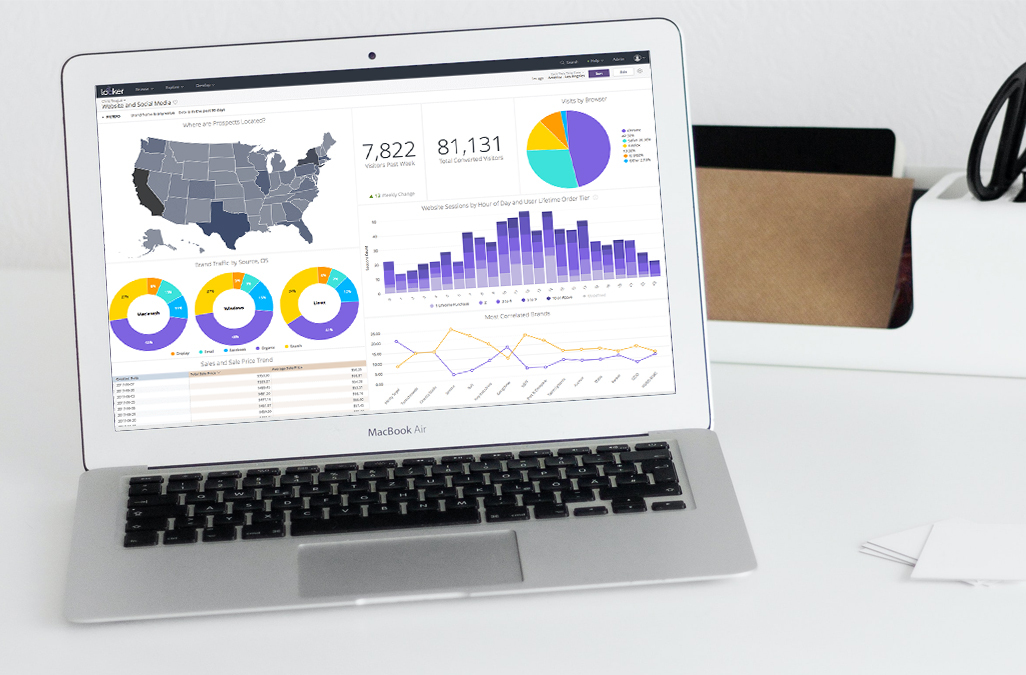By David “Mac” McDaniel
In June 2021, Google Cloud introduced Visual Inspection AI, a manufacturing tool that automates product inspections to reduce production defects caused by human error.
This new tool is designed to assist manufacturers in detecting flaws in items before they’re shipped. It’s the latest attempt by Google Cloud to help customers in the manufacturing sector.
Visual Inspection AI is designed for various industries, including automotive, semiconductor production, and electronics manufacturing. Manufacturers have for years used AutoML, Google’s general-purpose AI product for quality control, but Visual Inspection AI is more accurate and efficient.
In this article, we’ll explain:
- What Google Cloud’s Visual Inspection AI tool is and how it works
- Challenges with current visual inspection techniques
- How it compares to Amazon’s Lookout for Vision
- What makes this AI solution special
- The main advantages and use cases
Challenges with Current Visual Inspection Techniques
One or more phases in the manufacturing process usually include visually inspecting the product for defects. Visual inspection is often a manual procedure that takes time and is prone to mistakes.
Rule-based visual inspection devices have also emerged over time. However, each approach has drawbacks:
- Manual inspection is subject to operator perception and experience, which impacts consistency.
- Traditional inspection machinery needs to be programmed. It isn’t flexible and can’t adapt to product changes.
- Existing machine vision-based inspection can only detect a handful of defects at a time.
What Is Google Cloud’s Visual Inspection AI? How Does It Work?
The Google Cloud Visual Inspection AI solution is a collection of AI and computer vision technologies to automate visual inspection activities, allowing firms to improve quality control procedures by automatically detecting product defects.
The Visual Inspection AI solution will tackle two use cases: Detecting cosmetic defects and inspecting product assembly. As Dominik Wee, Google Cloud’s Managing Director of Manufacturing and Industrial Operations explained, “We’re seeing a lot more demand, and I think it’s because we’re getting to a point where AI is becoming really widespread.”
Now, with the help of computer vision technology, line managers can correct defects prior to shipping products—which will improve output, increase yields, and slash return costs.
Amazon Lookout for Vision: How Does It Compare?
Amazon is also, unsurprisingly, a pioneer in the development of vision technology. After all, it’s grown into a multibillion-dollar industry. According to Oxford Economics, China is anticipated to automate 12.5 million manufacturing jobs by 2020, while McKinsey & Co. predicts that the United States will follow suit soon, automating at least 30 percent of its manufacturing positions.
To keep up, Amazon created Lookout for Vision, which is quite like Google’s version in many ways. It scans images for defects such as cracks and dents, as well as odd colors and shapes. GE Healthcare, Basler, and Dafgards have already chosen Amazon’s solution, and the company will surely expand further in the area.
Google Cloud will compete for market share. Since its launch, Renault, Foxconn, and Kyocera have all signed up for Google Cloud’s Visual Inspection AI services. Furthermore, given Google’s track record and power in the IT sector, other former Amazon partners may be enticed to follow suit. For consumers looking for rapid answers, Google Cloud’s new program is now live.
What Makes Google Cloud’s Visual Inspection AI Special?
Google Cloud’s Visual Inspection AI is more efficient and effective than general-purpose machine learning systems. It can create models with 300 times fewer human-labeled images— as little as ten in some cases. Machine learning will also improve the platform’s accuracy over time.
Manufacturers will be able to improve their supply chains, minimize quality concerns, and manage product inventories because of this. Wee added, “It basically offers you the simplicity of deployment and the peace of mind to be able to run it on the shop floor.”
And there’s no better moment than now.
In a 2020 PricewaterhouseCoopers survey, manufacturing companies reported that over the next five years, they expect digital transformation to make their operations markedly more efficient. In this, as in many recent tech initiatives, Google intends to lead the charge. As Wee put it, “We’re trying to get the capability of AI at scale into the hands of manufacturers.”
Google Cloud’s Visual Inspection AI demo demonstrates how it may be used to tackle quality control issues in sectors such as:
- Automotive manufacturing: Surface inspection in the paint shop, welding seam inspection in the body shop, press shop inspection (scratch, dents, fractures, stains). Engine block inspection in the foundry (cracks, deformation, or anomalies).
Figure 1: Manufacturing inspection tasks
- Semiconductor manufacturing: Die crack inspection, pre-place inspection, SoC packaging inspection, and board assembly inspection are all examples of wafer-level anomaly and defect localization.
Figure 2: Silicon wafer defect analysis
- Electronics manufacturing: PCB soldering and gluing (insufficient solder, Icicle, shift, exceeding tin, etc.), product surface check, and defective or missing printed circuit board components (screw, spring, foam, connection, shield, glue spill, mesh deformation, scratches, bubbles, etc.).
Figure 3: Mobile phone PCB inspection
- General-purpose manufacturing: Inspection of packaging and labels, fabric examination (mesh, rip, yarn), inspection of metal and plastic welding seams, and surface inspection.
Figure 4: Welding seam inspection
Electronics manufacturing: PCB soldering and gluing (insufficient solder, Icicle, shift, exceeding tin, etc.), product surface check, and defective or missing printed circuit board components (screw, spring, foam, connection, shield, glue spill, mesh deformation, scratches, bubbles, etc.).
Google Cloud is catering to the growing demand for industrial automation with its new Visual Inspection AI tool. Implementing such technology sounds simple, but it really isn’t that easy. Another key benefit is that Visual Inspection AI is intended to form AI models with full edge-to-cloud capability in keeping with Google. The most common obstacle to AI integration is the lack of talent to develop good use of AI. Google Cloud’s new visual inspection AI is an excellent step towards the right deployment of AI within the manufacturing industry.
Google Cloud’s Visual Inspection AI tool is one of many Google Cloud tools that can help you work more efficiently. Are you interested in learning which cloud tools are the best for your business and team? Schedule a consultation with our Cloud Experts today.

